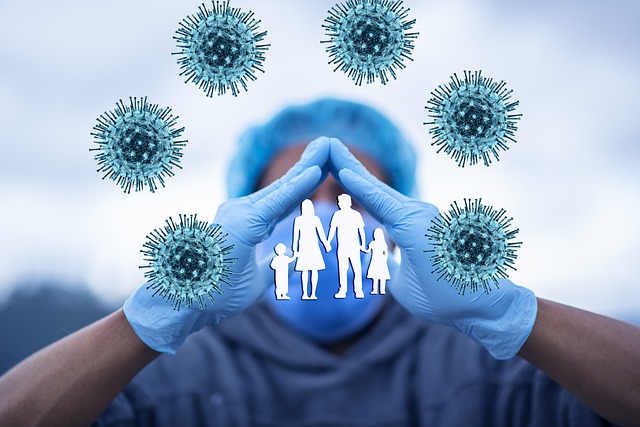Understanding Pneumonia Vaccines and Immune Response
Pneumonia remains a significant health concern worldwide, affecting millions of people each year. Vaccination has emerged as one of the most effective preventive measures against this potentially serious respiratory infection. Understanding how pneumonia vaccines work, their benefits, and who should receive them can help individuals make informed decisions about their health and protect vulnerable populations from severe complications.

Pneumonia is an infection that inflames the air sacs in one or both lungs, which may fill with fluid or pus. While it can range from mild to life-threatening, vaccination offers a proven method to reduce the risk of contracting certain types of pneumonia. Several vaccines are available that target different bacterial strains responsible for pneumococcal pneumonia, one of the most common and serious forms of the disease.
How the Pneumonia Vaccine Affects the Immune System
Pneumonia vaccines work by introducing harmless components of the bacteria that cause pneumococcal disease into the body. These components, typically polysaccharides or proteins from the bacterial capsule, do not cause illness but trigger an immune response. When the immune system encounters these foreign substances, it produces antibodies specifically designed to recognize and attack the actual bacteria if encountered in the future.
There are two main types of pneumococcal vaccines: pneumococcal conjugate vaccines (PCV13, PCV15, PCV20) and pneumococcal polysaccharide vaccine (PPSV23). Conjugate vaccines link the bacterial polysaccharides to a carrier protein, which enhances the immune response, particularly in young children whose immune systems are still developing. This connection helps create a stronger and longer-lasting immune memory.
The immune system responds by activating B cells, which produce antibodies, and T cells, which help coordinate the immune response and create memory cells. These memory cells remain in the body for years, sometimes decades, allowing for rapid recognition and response if the actual pneumococcal bacteria enter the body. This immunological memory is the foundation of vaccine-induced protection.
Benefits and Efficacy of the Pneumonia Vaccine
Pneumonia vaccines offer substantial protection against serious pneumococcal infections, including pneumonia, meningitis, and bloodstream infections. Clinical studies have demonstrated that pneumococcal conjugate vaccines are approximately 75 to 85 percent effective at preventing invasive pneumococcal disease in healthy adults. For older adults and those with certain chronic conditions, effectiveness rates may vary but still provide significant protection against severe outcomes.
Beyond individual protection, widespread vaccination contributes to community immunity. When a large portion of the population is vaccinated, the spread of pneumococcal bacteria decreases, indirectly protecting those who cannot be vaccinated or who have weakened immune systems. This herd immunity effect has led to dramatic reductions in pneumococcal disease rates in countries with robust vaccination programs.
The vaccines also reduce antibiotic use by preventing infections that would otherwise require treatment. This contributes to the broader public health goal of reducing antibiotic resistance, a growing concern in modern medicine. Additionally, preventing pneumonia reduces hospitalizations, medical costs, and lost productivity due to illness, creating economic benefits alongside health improvements.
Side effects from pneumonia vaccines are generally mild and temporary. Common reactions include soreness at the injection site, mild fever, fatigue, and headache. Serious adverse reactions are rare, making these vaccines safe for most individuals. The benefits of protection against potentially life-threatening pneumococcal disease far outweigh the minimal risks associated with vaccination.
Who Should Receive the Pneumonia Vaccine?
Vaccination recommendations vary based on age, health status, and previous vaccination history. The Centers for Disease Control and Prevention and similar health organizations worldwide provide specific guidelines to help healthcare providers and individuals determine appropriate vaccination schedules.
All children younger than two years old should receive pneumococcal conjugate vaccine as part of routine childhood immunizations. The standard schedule includes doses at 2, 4, 6, and 12 to 15 months of age. This early vaccination protects infants and toddlers during a period when they are particularly vulnerable to serious pneumococcal infections.
Adults aged 65 years and older should receive pneumococcal vaccination, as this age group faces increased risk for pneumococcal disease and its complications. Depending on previous vaccination history, older adults may receive PCV20 alone or PCV15 followed by PPSV23. The specific recommendation depends on individual circumstances and should be discussed with a healthcare provider.
People between 2 and 64 years old with certain chronic health conditions or risk factors should also receive pneumococcal vaccines. These conditions include chronic heart disease, lung disease, diabetes, chronic liver disease, chronic kidney disease, alcoholism, and smoking. Individuals with weakened immune systems due to HIV infection, cancer treatment, organ transplantation, or immunosuppressive medications are particularly vulnerable and should prioritize vaccination.
Children and adults with cochlear implants or cerebrospinal fluid leaks have an increased risk of pneumococcal meningitis and should receive appropriate vaccination. Healthcare providers can assess individual risk factors and recommend the most appropriate vaccine type and schedule based on current guidelines and medical history.
Vaccination Schedule and Timing Considerations
The timing of pneumonia vaccination depends on the specific vaccine type and individual circumstances. For children, the pneumococcal conjugate vaccine series should be completed according to the recommended schedule to ensure optimal protection during early childhood. Catch-up vaccination is available for children who missed doses or started the series late.
For adults receiving both PCV15 and PPSV23, healthcare providers typically recommend administering PPSV23 at least one year after PCV15 for optimal immune response. However, for adults with immunocompromising conditions, the interval may be shortened to at least eight weeks. PCV20 can be given as a single dose without the need for subsequent PPSV23 administration.
Pneumonia vaccines can generally be administered alongside other vaccines, such as influenza or COVID-19 vaccines, without reducing effectiveness. However, different vaccines should be given in separate injection sites. Coordinating vaccination schedules can improve compliance and ensure comprehensive protection against multiple respiratory diseases.
Long-Term Protection and Revaccination
The duration of protection provided by pneumonia vaccines varies depending on the vaccine type and individual factors. Pneumococcal conjugate vaccines generally provide long-lasting immunity, often lasting many years or even decades. The polysaccharide vaccine (PPSV23) may require revaccination after five years for certain high-risk individuals.
For most healthy adults who receive pneumococcal vaccination after age 65, revaccination is typically not necessary. However, individuals with certain immunocompromising conditions may benefit from additional doses. Healthcare providers evaluate the need for revaccination based on individual risk factors, previous vaccination history, and current health status.
Ongoing research continues to refine vaccination recommendations and develop improved vaccines with broader coverage against pneumococcal strains. Staying informed about current guidelines and maintaining open communication with healthcare providers ensures individuals receive appropriate and timely protection against pneumococcal disease.
Pneumonia vaccination represents a critical tool in preventing serious respiratory infections and their complications. By understanding how these vaccines work, recognizing their proven benefits, and identifying who should receive them, individuals and communities can take proactive steps toward better respiratory health and reduced disease burden.
This article is for informational purposes only and should not be considered medical advice. Please consult a qualified healthcare professional for personalized guidance and treatment.




